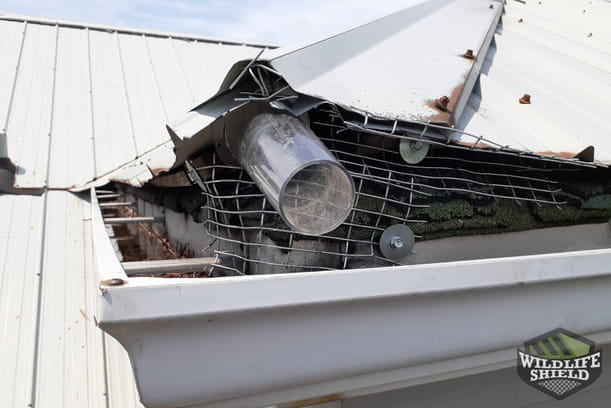This article tells the story of a squirrel removal and wildlife-proofing job in Toronto that required multiple visits to solve. Both a squirrel and a family of bats were found nesting in the attic of a multi-residential property. To remove them, members of the Squirrel Control team installed one-way doors to the animals’ entry points and sealed other vulnerabilities on the roof. To see how we can solve your squirrel problem, reach out to Squirrel Control today: 647-496-0815.
Initial Inspection
The landlord of this Toronto property first reached out to Squirrel Control in the summertime after a tenant told them that a squirrel was living in the attic. They could hear thumping, squealing, and scratching sounds coming from the attic during the day and noticed a hole in the roof where the animals might have been coming in. A technician from the Squirrel Control promptly went to investigate the situation.
The first thing our technicians do when arriving on the scene is to perform a thorough inspection. This gives our experts a proper understanding of the situation, allowing them to provide solutions that last. We will not only find the entry point that the animals have been using, but also every weak point on the structure of the home that could lead to another invasion. Every factor is considered so we can provide the best service possible.
In this case, the technician found a hole in the roof on the north side of the building. This is a common entry point for squirrels. With time, the edge of the roof can split away from the framing of the house, creating an opening that squirrels can chew on and widen to get into the attic. Surprisingly, the technician also found evidence of bats on a corner of the roof. The metal sheets on top of the roof were pulled up, revealing a hole full of bat feces.

To remove the animals, the technician offered to install one-way doors. These would be placed directly over the entry points to let the animals exit safely. To help ensure that they would not come back, it was also recommended that the roof vents, plumbing vents, and corners of the roof be excluded with mesh. Disinfecting the entry points was also recommended to remove harmful odours and pathogens. The landlord agreed to remove the animals, cover the corners, and disinfect immediately.
Removal and Exclusion
As part of the removal and exclusion process, the technician first put mesh on the corners of the roof so that no more animals would exploit them. The mesh consisted of galvanized steel, a flexible and durable material that is strong enough to resist the pulling and chewing of animals.
Next, the technician cleaned up the feces within the bats’ entry point and disinfected the space with a commercial-grade fogger. He then placed a one-way door on the hole that the bats were using with one that is specifically designed for their species. The bats would go out to feed at night and be unable to figure out how to get back in. The same process was carried out for squirrels.
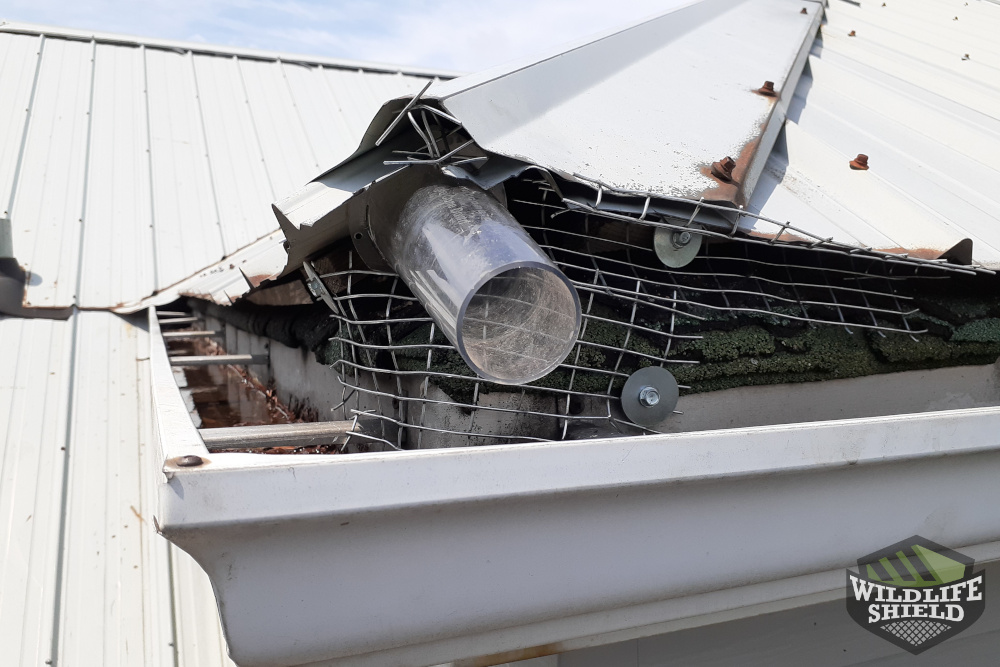
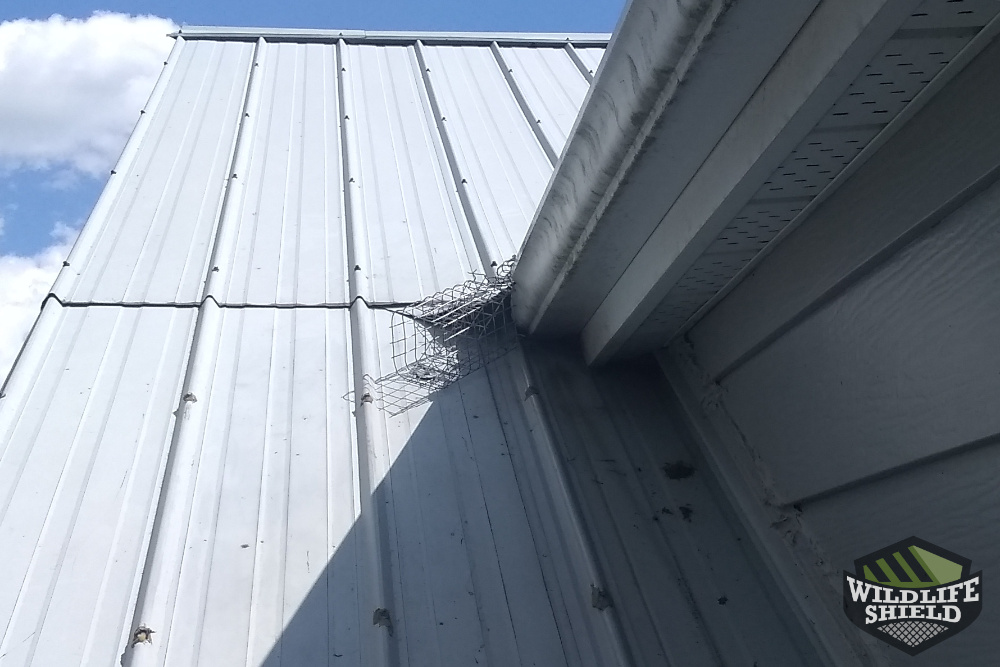
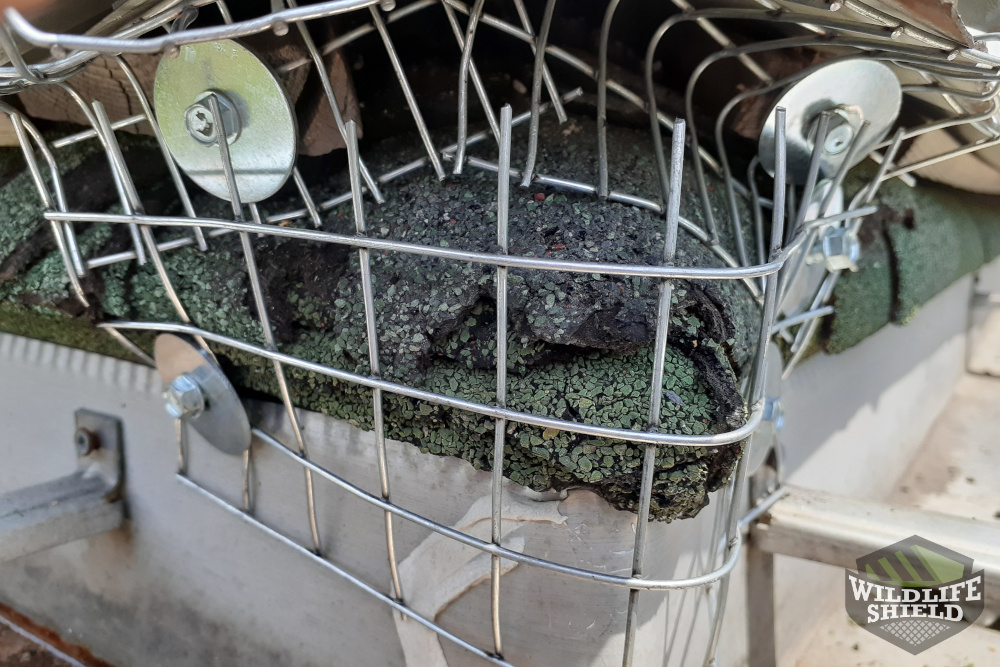
Follow-up: The Squirrels are Back
Though two weeks had passed since the installation of the one-way doors, tenants continued to hear noises in the attic. A technician quickly returned to the property to investigate and replaced the one-way door with a new one because a tenant reported that they had seen a squirrel get back into the attic, through the door. This is a rare occurrence but, in some cases, the squirrels will learn how to get back inside.
A few weeks later, the noises stopped, and the squirrel was gone. The bats were also nowhere to be seen. The animals had likely exited the attic through the one-way doors and found other places to live. Later, in September, a member of the Squirrel Control team returned to the property to remove the doors and replace them with mesh.
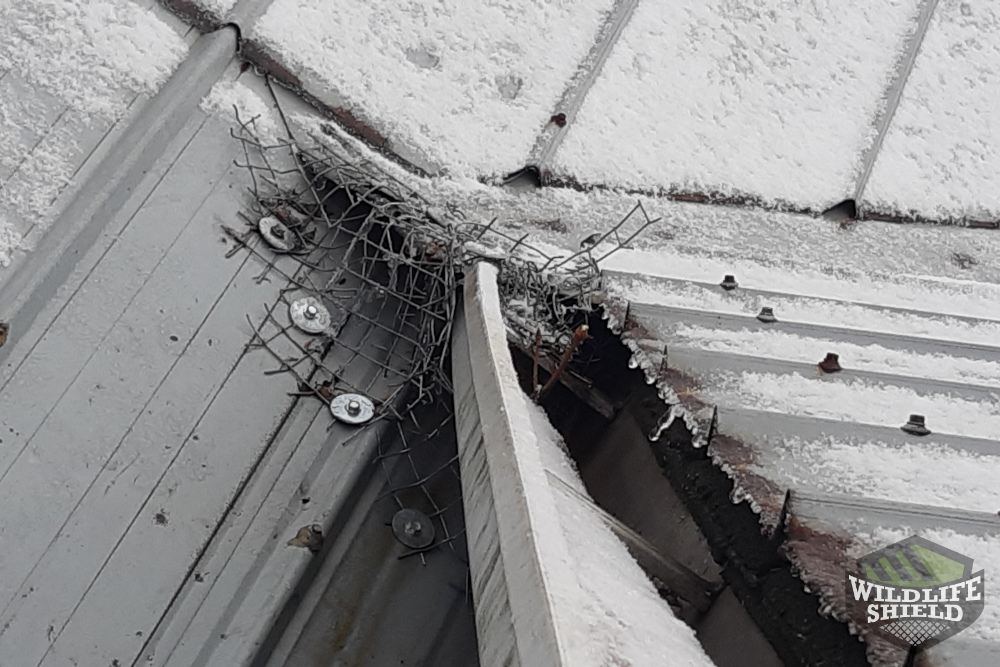
A few months later, in early January, the landlord called again when they believed that squirrel activity had returned to the property. Tenants could hear noises in the attic again. It was unknown if the animal had re-entered through the door or if it was reaching the attic by other means. As Squirrel Control’s services always come with a warranty, a technician returned once again to see what was going on.
Upon arrival, the technician could not immediately find an entry-point. The exclusion that was performed a few months prior was still in good shape and there was no clear indication of a break-through. To see what was going on inside the attic, the technician used a thermal camera and pointed it toward the ceiling of the room where the tenants could hear squirrels the most. A blue spot in the picture indicated that there were holes in the insulation and that animals were probably nesting there.
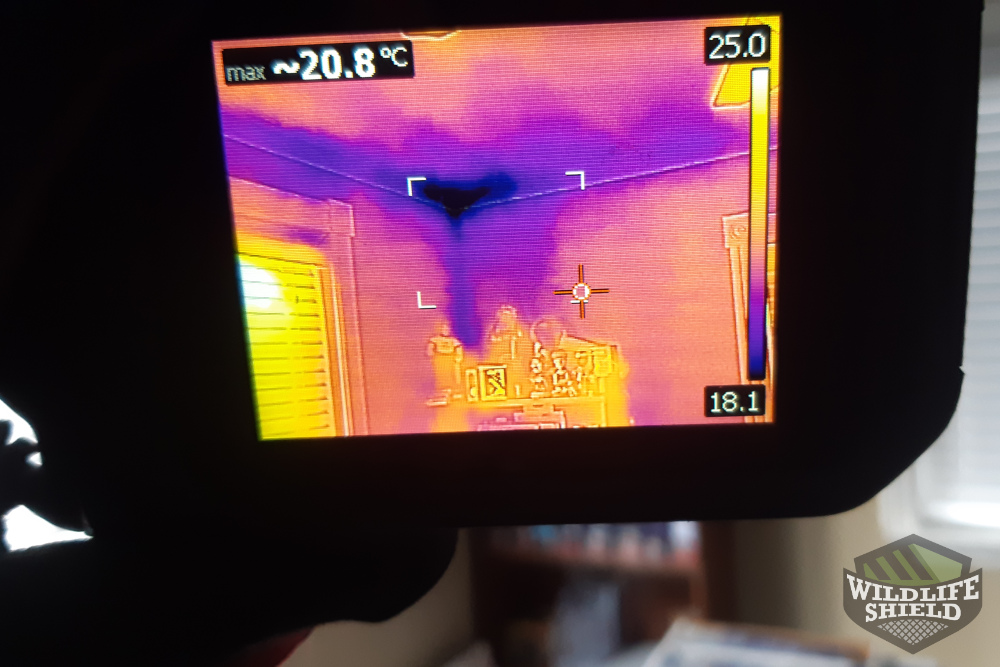
After finding the spot in the attic where the animal was probably nesting, the technician went into the attic to investigate further. A vent in the attic had a hole in its mesh and there was fur in it, indicating that squirrel was using it as an entry point. The technician then returned to the roof to cover the roof vents in mesh, as was originally recommended. He then installed a one-way door to one of them to let the animal out safely.

Conclusion
Within a few weeks, the squirrel was finally gone. The tenants were no longer being disturbed and could not hear anything in the attic anymore. The technician then returned to remove the one-way door from the roof vent and replace it with mesh.

This case demonstrates the importance of wildlife-proofing the roof. Squirrels are persistent animals that will usually try to get back into their dens after they have been evicted, so excluding the attic completely is key. If there are squirrels on your property, or if you want to keep them out, reach out to Squirrel Control for comprehensive, guaranteed wildlife removal and proofing services. Our technicians are thoroughly trained and experienced in all forms of wildlife control. Call Squirrel Control today for all your pest removal needs.
